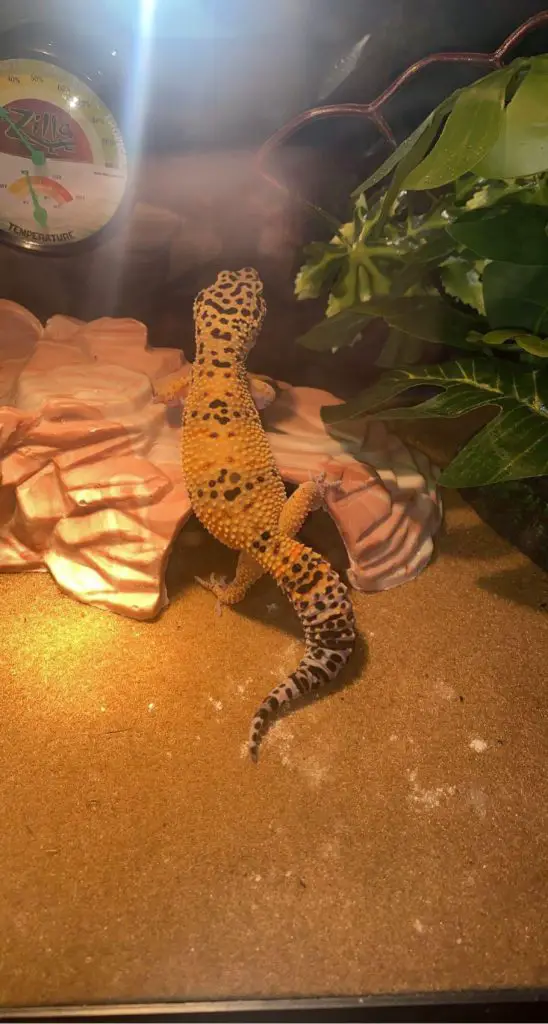If you’re a leopard gecko owner, you’re always on the hunt for the best bedding for your little friend. Coco fiber, also known as coconut coir, is a popular choice among reptile enthusiasts. But is it a good option for leopard geckos?
Coco fiber is a natural substrate made from the husks of coconuts. It’s absorbent and holds moisture well, which can be beneficial for leopard geckos that require a humid environment. However, there are some potential drawbacks to using coco fiber as bedding. Read on to learn more about the pros and cons of this substrate for leopard geckos.

Is Coco Fiber Good for Leopard Geckos?
Leopard geckos are fascinating creatures that make great pets. As a responsible pet owner, it is essential to provide your leopard gecko with a comfortable and healthy environment. One of the most important factors to consider when keeping leopard geckos is the type of substrate to use in their enclosure.
What is Coco Fiber?
Coco fiber is a popular substrate for leopard geckos. It is made from the husk of coconuts and is an excellent alternative to traditional substrates like sand or gravel. Coco fiber is all-natural, biodegradable, and eco-friendly. It is also free of harmful chemicals and pesticides, making it safe for your leopard gecko.
Coco fiber is highly absorbent and can hold up to 10 times its weight in water. It is also great at regulating humidity levels in the enclosure, which is essential for leopard geckos. Additionally, coco fiber is easy to clean and can be used for extended periods before needing to be changed.
The Benefits of Using Coco Fiber for Leopard Geckos
Using coco fiber as a substrate for leopard geckos has several benefits. Here are some of the most notable advantages:
- Coco fiber is all-natural and free of harmful chemicals and pesticides.
- It is highly absorbent and can hold up to 10 times its weight in water.
- Coco fiber is excellent at regulating humidity levels in the enclosure.
- It is easy to clean and can be used for extended periods before needing to be changed.
- Coco fiber is soft and comfortable for leopard geckos to walk on.
- It is less likely to cause impaction than traditional substrates like sand or gravel.
Coco Fiber vs. Sand
Sand is a popular substrate for leopard geckos, but it has several drawbacks. For one, sand can cause impaction if ingested, which can be fatal for leopard geckos. Sand is also challenging to clean and can harbor harmful bacteria and parasites.
Coco fiber, on the other hand, is less likely to cause impaction and is easier to clean. It also does not harbor harmful bacteria and parasites like sand does. Additionally, coco fiber is more absorbent than sand and can regulate humidity levels in the enclosure better.
Coco Fiber vs. Gravel
Gravel is another popular substrate for leopard geckos, but it is not ideal. Gravel is not absorbent and can cause problems with humidity regulation in the enclosure. It is also difficult to clean and can harbor harmful bacteria and parasites.
Coco fiber is a much better option than gravel. It is highly absorbent and can regulate humidity levels in the enclosure. It is also easy to clean and does not harbor harmful bacteria and parasites.
How to Use Coco Fiber for Leopard Geckos
Using coco fiber as a substrate for leopard geckos is easy. Here are the steps to follow:
- Thoroughly clean the enclosure before adding the coco fiber.
- Add a layer of coco fiber to the bottom of the enclosure, making sure it is at least 2-3 inches deep.
- Mist the coco fiber with water to help regulate humidity levels.
- Replace the coco fiber every 2-3 months or as needed.
Conclusion
In conclusion, coco fiber is an excellent substrate for leopard geckos. It is all-natural, free of harmful chemicals and pesticides, highly absorbent, and great at regulating humidity levels in the enclosure. It is also easy to clean and can be used for extended periods before needing to be changed. When it comes to choosing a substrate for your leopard gecko, coco fiber is a safe and healthy option.
Frequently Asked Questions
Leopard geckos are one of the most popular pet reptiles. As a responsible owner, it’s important to learn about the best substrate for their enclosure. Coco fiber is a popular option, but is it good for leopard geckos? Read on to find out.
What is coco fiber?
Coco fiber, also known as coconut coir, is a substrate made from the husks of coconuts. It’s an organic material that’s often used for gardening and reptile enclosures. Coco fiber is a popular choice for leopard gecko owners because it’s absorbent and helps maintain proper humidity levels.
However, it’s important to note that not all coco fiber is created equal. Some brands may contain added chemicals or fertilizers that can be harmful to your leopard gecko. Always read the label and choose a reputable brand.
Is coco fiber safe for leopard geckos?
Coco fiber is generally considered safe for leopard geckos as long as it’s used correctly. It’s important to provide a thick layer of substrate to allow your gecko to burrow and feel secure. Avoid using loose or dusty substrates that can be ingested and cause impaction.
While coco fiber is absorbent, it’s also important to spot clean regularly and replace the substrate every few months. This will help prevent the build-up of harmful bacteria and maintain a clean and healthy environment for your leopard gecko.
Can coco fiber cause respiratory problems for leopard geckos?
Coco fiber is generally considered safe and does not pose a significant risk of respiratory problems for leopard geckos. However, it’s important to make sure the enclosure is well-ventilated and not too humid. High humidity levels can lead to respiratory issues in reptiles.
If you’re concerned about respiratory problems, you can choose a different substrate or monitor your leopard gecko for any symptoms such as wheezing or labored breathing.
How often should I change the coco fiber in my leopard gecko’s enclosure?
You should change the coco fiber in your leopard gecko’s enclosure every 3-6 months or as needed. This will help prevent the build-up of harmful bacteria and maintain a clean and healthy environment for your gecko.
It’s also important to spot clean regularly by removing any soiled substrate and replacing it with fresh coco fiber. This will help prevent odors and maintain a clean and healthy environment for your leopard gecko.
Are there any alternatives to coco fiber for leopard geckos?
Yes, there are several alternatives to coco fiber for leopard geckos. Some popular options include reptile carpet, paper towels, and tile. Reptile carpet is easy to clean and can be reused, while paper towels are inexpensive and disposable. Tile is a durable and long-lasting option that’s easy to clean.
When choosing a substrate, it’s important to consider the needs of your leopard gecko and provide a safe and comfortable environment for them to thrive.
BEST and WORST Leopard Gecko Substrates
In conclusion, coco fiber is a suitable substrate for leopard geckos. It provides a naturalistic environment that mimics their natural habitat and encourages natural behaviors such as digging and burrowing. Unlike other substrates that may cause impaction or respiratory issues, coco fiber is safe for geckos to ingest and breathe in.
However, it is important to note that coco fiber may not be the best choice for all leopard geckos. Those with a history of impaction or digestive issues may benefit from a different substrate. Additionally, it is important to maintain proper humidity levels and cleanliness to prevent any potential health issues.
Overall, coco fiber is a great option for leopard gecko owners looking to create a natural and safe environment for their pets. As with any aspect of pet care, it is important to do research and consult with a veterinarian to determine the best substrate for your individual gecko’s needs.


